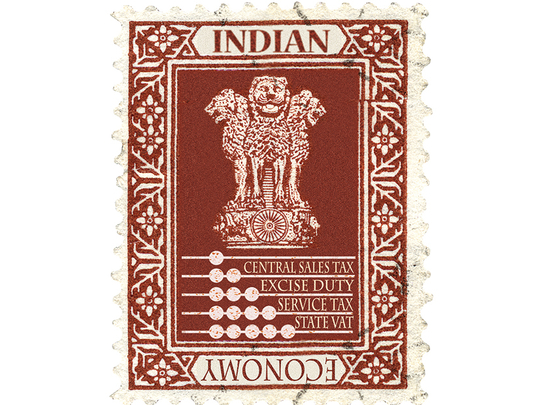
UAE stalwarts who do business in India are bewildered by the sheer complexity of the country — too many provinces, numerous languages, maze of intricate rules that are mostly at cross purposes, but more importantly a plethora of taxes that are levied at every stage of conducting business.
With bated breath these businessmen wait for India’s parliament to set in motion the passage of Goods & Service Tax — or GST as it is widely known and touted as the biggest indirect tax reforms since 1947. It is expected to unleash a swathe of positive economic outcomes.
Historically, Indians have been paying taxes on taxes, and in some cases, it’s a never ending story of paying multiple taxes. In fact you need to deploy a battalion of experts to figure out the implication of taxes under different scenarios.
How much is the tax rate and which type of tax will be applicable if the goods or services are sold in one state and then resold in the same state? And what if the goods or services are sold in one state (Mumbai to Pune), but resold in another (say, Goa). Or, what if the goods and services originate in state one (Maharashtra), get sold in state two (Goa) and then get resold in the same state two (Goa).
To conduct business in India you need to understand the country’s federal structure that works at two levels when it comes to taxing the poor customer: central taxes and state taxes. And considering that the Indian economy is classified in three sectors — agriculture and allied, industry and services, the tax regime has to look at various formats to achieve its objectives of putting a smile on customers’ faces while they are being ripped off.
Sales tax
Services is the largest sector, accounting for 52.97 per cent, followed by industry (30.02 per cent) and agriculture and allied sector (17.01 per cent).
Not many years ago tax was levied on the value of sales of goods (or even on services). It was simple, but the problem was that sales tax was also levied on taxes already levied on the goods used for making the final product. In the 21st century that we all live in, services are sold along with goods (e.g. warranty) and goods are sold with services (e.g. SIM card).
And in India one can sell goods as services and evade taxes. For example, instead of selling a car (as goods), you can sell the car on lease for 10 years (as service) and save on tax if the service is not taxed or taxed at a lower rate. GST is expected to eliminate all such disputes because all transactions shall be taxed at the same rate and no distinction will be made between goods and services.
Simply put, GST is a destination-based tax, and not based on the origin of goods or services.
The four broad taxes that are levied today are:
* Central sales tax (CST) — for interstate sales
* Excise duty — on manufacture
* Service tax — on services
* State VAT — for sales within the state
But there are a few more taxes that burn a nice hole in everyone’s pockets: countervailing duty, additional customs duties, entertainment tax, octroi and entry tax, luxury tax, lottery taxes, electricity duty, etc.
Homogeneous market
Under GST, there will be a dual taxation regime, where the only two components will be Central GST (CGST) and State GST (SGST). Under such nomenclature, the total amount of GST for any goods or service will be distributed in both state and central exchequers.
GST has been in the making for over a decade and it has been floored on the House by three Central governments. When the GST bill finally gets passed, it will repeal the tax slavery that 1.2 billion Indians have been subjected to for more than seven decades.
GST will integrate India with 140 other nations that have embraced tax reforms and adopted GST. Besides, it will change the DNA of the nation from being a heterogeneous market to a homogeneous market, offering seamless trade and commerce, akin to the concept in the Gulf.
As an integrated tax structure, GST will offer benefits galore.
* Reduction in prices: Due to full and seamless credit, manufacturers or traders will not have to include taxes as a part of their cost of production.
* Less compliance and procedural cost: Instead of maintaining big records, returns and reporting under various different statutes, all assesses will find comfort under GST as the compliance cost will be reduced.
* Ease of doing business: focus on core business rather than planning taxes.
All said and done, GST is expected to garnish the Indian economy with a $300 billion (Dh1.1 trillion) cherry on the $2 trillion cake (the Indian GDP). To that effect, all of us Indians are praying to the politicians to just make it happen this time. Just Do It ...
The writer is an, event manager based in the UAE and India.












